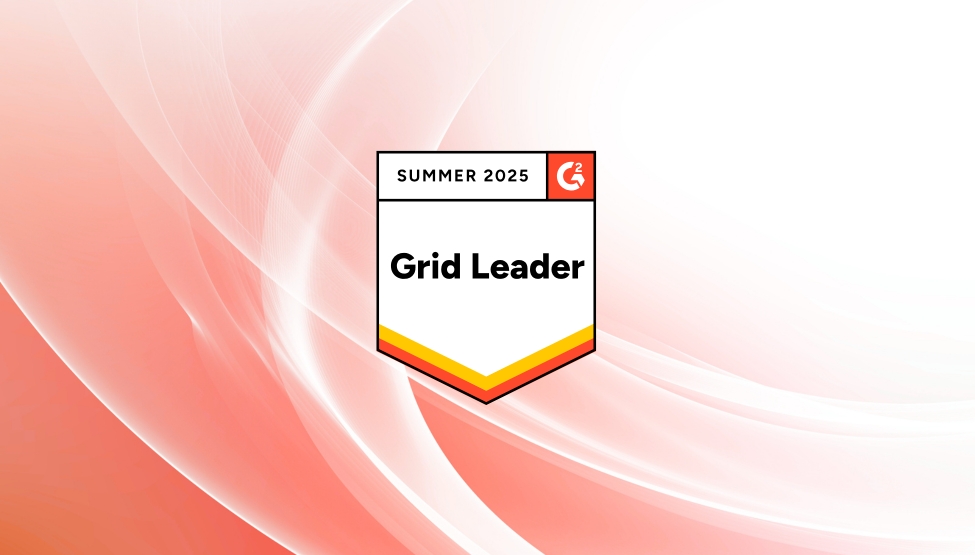
Being a project leader means being pulled in different directions. One day you’re persuading a stakeholder about the importance of the feature your team is building. The other — wondering how to fix a continuous deployment pipeline when the person who built it signed off for a 2-week vacation. These two problems have a common root cause: the absence of good software documentation. So let’s fix that.
What is Software Documentation?
Software documentation is a collection of documents describing a software system’s purpose, architecture, and functionality. It’s a shared system of record that Software Developers, stakeholders, and end-users rely on to understand how to develop, deploy, and use the final product.
The two main categories of software documents are:
- Software development documents like technical system specifications, reference architectures, API documents, and troubleshooting guides. That is everything Software Developers need to create software and users — to operate it.
- Software project documentation like project plans, design documents, test cases, and project schedules. These act as a roadmap for the different project lifecycle stages.
Both types of documents are essential to ensure a smooth project kick-off and its successful delivery. After all, as Rory Burke wrote in the ‘Project Management Techniques’: “Project management can be defined as a way of developing structure in a complex project, where the independent variables of time, cost, resources and human behavior come together.” Good software documentation helps you establish a solid structure for your project.
Why Documentation is Important in Software Development
Creating program documentation is fun…said no project leader ever. Especially, when the circumstances press for fast action. But doing the initial grunt work saves you more time at the later project stages. CERN found that software engineering teams usually spend 27% of their time on understanding the project and then another 33% on reworking the existing program. Why? Because supporting project documentation was inadequate, not detailed enough, or outdated.

Source: CERN
Thorough software project documentation done once prevents hours of wasted effort on reference architecture reworks, project roadmap realignment, and change management in general. It also helps all project stakeholders — from sponsors to individual contributors — better manage expectations thanks to realistic cost, time, and resource estimates.
It Helps Establish a Strong Project Vision and Scope
A project vision statement communicates the “why” behind the initiative: Why now, why this type of solution, and why it’s important for our business. As the first step of the software requirements documentation creation process, a project vision statement helps define the key goals and what you plan to do to accomplish them.
By knowing your “why”, it’s easier to define your project scope — a set of criteria you’ll use to describe what you plan to achieve (and more importantly — what you plan to omit) during the planned time scope. A good project scope includes: Justifications (reason for the project initiation), a list of project deliverables (results marking project completion), and the metrics you’ll use to evaluate its success.
Both, a project vision statement and a project scope, help managers secure strong stakeholder support, properly manage expectations, and create better software requirements documentation.
It Helps Implement Effective Project Management
When you have a clear list of deliverables, paired with detailed system specifications and business requirements, you can break these down into individual project phases and specific activities for each phase.
If you use the Agile methodology (like we do at Edvantis!), these will look like a set of Sprints and a set of prioritized product features for each. To avoid going into too many details on project management, let’s just say that without accurate software development documentation, your plans will be way beyond the schedule in the best case and fully detached from reality in the worst.
Remember: 35% of projects are considered a failure because they didn’t meet end-users’ expectations due to vague specifications, lack of clear need, or high ambiguity.
It Promotes Ongoing Knowledge Management
During the development phase, development documentation acts as a ‘single source of truth’ for the engineering, design, and QA teams. Whenever there’s an argument about, say the optimal query engine for a data analytics system or reluctance to implement custom integration for an ecommerce platform, you can check back with specs to decide on the optimal solution.
At later product stages, detailed documentation of software projects helps make better decisions for feature prioritization or platform scalability. By knowing how the system was initially designed and why certain decisions were taken, Software Developers can spend less time on improving and reengineering code or worrying about possible security issues due to an overlooked integration or an unprotected end-point. Documentation centralizes all the knowledge about a software system in one place, making it easier to find the latest, most accurate information.
It Improves Quality and Process Control
There’s always more than one way to solve an engineering problem. But you’ll also want to maintain high consistency to avoid unnecessary technical debt. Software engineering documentation helps teams better understand how things work and what “checkboxes” must be ticked for each process.
Clear documentation also promotes essential software engineering best practices of “Don’t Repeat Yourself (DRY)” and “Once and Only Once”. Each significant piece of functionality should be present in the source code only once to avoid unnecessary system ambiguity (and thus performance issues). When your teams have clear guidelines, they don’t have to ‘invent the wheel’ every time and can follow pre-established best practices as needed, demonstrating creativity where it’s necessary, and following pre-established quality guidelines in other cases.
Eases Support and Maintenance
Last, but not least, software documentation helps pass on the knowledge to other teams — be it your SRE unit, in charge of operations, or an external dedicated development team you’ll bring to support the new product interaction.
Good software development documents provide a reference point for understanding the software’s codebase, dependencies, and integrations with other systems in your stack. Likewise, it promotes knowledge transfer and reduces dependencies on individual contributors, meaning you don’t have to rely on individual ‘knowledge bearers’ to fix things up.
5 Main Software Documentation Types
Although we often use ‘documentation’ in singular, a typical software development project involves multiple types of documents: program documentation, software requirements specifications (SRS), IT service contracts, software engineering documents, and external documentation for users.
Project Documentation
Software project documentation sets the scene for the project. They describe the business case/need for the project, outline risks and possible constraints, and establish change management procedures.
Comprehensive product documentation typically includes:
- Software development plan (SDP) detailing the approach, methodologies, resources, and timelines for the set project. A good SDP includes milestones, key dependencies, estimated timelines, and resource allocation for each project phase.
- Communication plan establishes the main communication channels and schedule, as well as procedures for reporting or issue escalation.
- Risk management plan describes possible risks and constraints that could affect the project, plus details risk management and mitigation strategies.
- Change management documents establish proper procedures for initiating changes to project scope, requirements, or implementation processes.
These are created internally by a project management office (PO), together with a Business Analyst, or in partnership with a software development vendor.
Software Requirements Specifications (SRS) Document
A software requirements specifications (SRS) document establishes the behavior, features, and performance criteria for developed software. It typically includes a high-level overview of user/stakeholder needs (aka the business requirements), plus a detailed description of the product’s functionality (aka the product’s feature and performance characteristics).
Let’s take a look at each section:
- Business requirements summarize the key project goals and commercial outcomes you expect to achieve (e.g., add a new revenue stream, reduce the system’s TCO, etc).
- Functional requirements convey the software’s features, capabilities, and expected behaviors in technical terms. These can be described as more general use cases, backed by granular user stories and standard user flows.
- Non-functional requirements specify the system’s security, reliability, and usability characteristics through different metrics. For example: You can list specific performance requirements like minimum storage capacity per unit or specific method of data encryption for cloud-based workloads.
A great SRS document covers each feature and quality characteristic at a great level of detail to ensure that the final product meets all staged objectives and user needs. You can learn more about effective requirement-gathering techniques from our previous post.
IT Service Contracts
If you rely on an external software development partner, as many businesses do, IT service contracts will require another folder of software documentation stack.
Service contracts help create equitable outsourcing partnerships, where each party understands their mutual obligations and general collaboration terms. At Edvantis, we always advocate for having three documents signed:
- Non-disclosure agreement (NDA) ensures transparent discussions about the project scope and goals without worrying that some sensitive corporate information becomes public.
- Master Service Agreement (MSA) outlines the intended scope of services; key project roles and responsibilities each side undertakes. It’s a preliminary agreement that has room for further discussions on the terms of a partnership.
- Statement of Work (SoW) establishes the scope of work the vendor legally commits to delivering under the set provisions.
Usually, the SoW document includes a software requirements specification document, plus project documentation from the vendor’s end, which establishes the timelines, team composition, responsibilities, deliverables, and budget among other factors.
Software Engineering Documentation
Engineering documentation for a software project encapsulates all the knowledge teams produce before and during the development process. Engineering documents describe the logic behind a system’s behavior, its quality characteristics, and other parameters that are essential for the system’s operation, maintenance, or extension.
Common examples of software engineering documents include:
- Technical design file (reference architecture) provides a conceptual framework of the software system and its components. It describes recommended structures, outlines the relationships between different system components, and suggests required integrations.
- Test plan lists all procedures, strategies, and objectives for testing software to ensure its topmost performance.
- Code documentation captures the functionality, logic, and implementation details of specific system components.
- API documentation includes information on endpoints, methods, parameters, authentication requirements, response formats, and error handling for created APIs.
- Security documentation describes built-in measures and applied protocols for data and user safety.
- Release notes outline changes, updates, bug fixes, and new features introduced in a software release.
Extensive documentation of a software project promotes better knowledge sharing between teams. So that every project stakeholder can easily find the information they need, leading to fewer misunderstandings. While Software Engineers use the documentation to clarify requirements and better understand certain decisions.
External Software Documentation
Last, but not least comes external software documentation — aka everything end-users can review to learn more about the product’s features and troubleshoot issues. This category typically includes:
- User manuals featuring step-by-step instructions and diagrams that help users understand and maximize the functionality of your product.
- Technical guides are written for more tech-savvy audiences, aiming to fine-tune, debug, or extend the capabilities of your product.
Both documents reduce the learning curve for respective user groups and help them get the most value out of your product. Better external software documentation equals faster product adoption and higher user satisfaction — the two likely business goals in your project documentation.
Conclusion
Software documentation is the backbone of effective knowledge sharing. Your company needs a single point of reference to understand why things get down the way they do.
The best way to create a strong culture of documentation is to set aside time at the beginning of the project to elicit, analyze, and organize all the requirements. Then transcribe these as user stories and user flows to stack into your product backlog. As the development works proceeds make a point of creating and updating software engineering documentation and cross-validating the results against the initial requirements.
Whether you need help with formalizing your project scope and vision or taking over the drafted program, Edvanits will be glad to assist. Contact us to get more details about our software engineering services.






